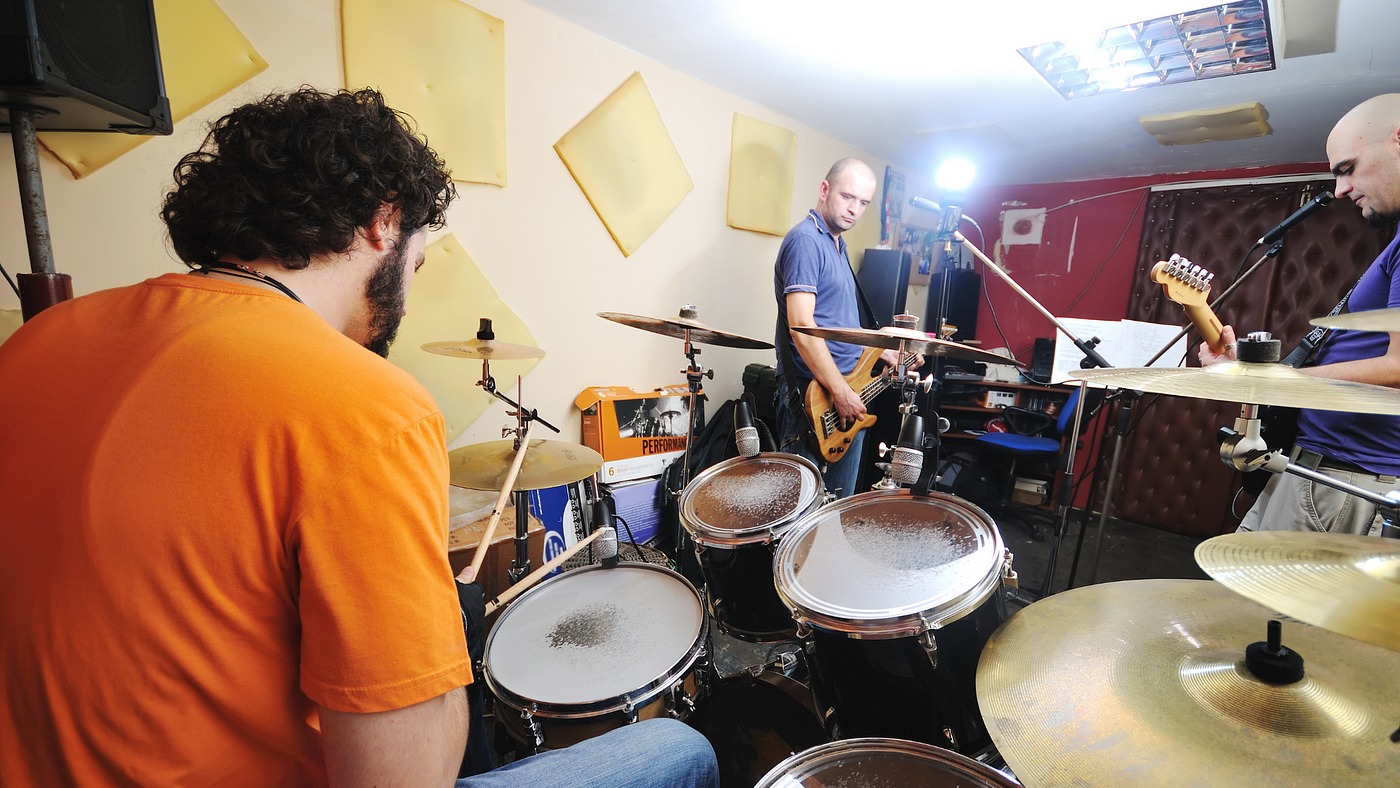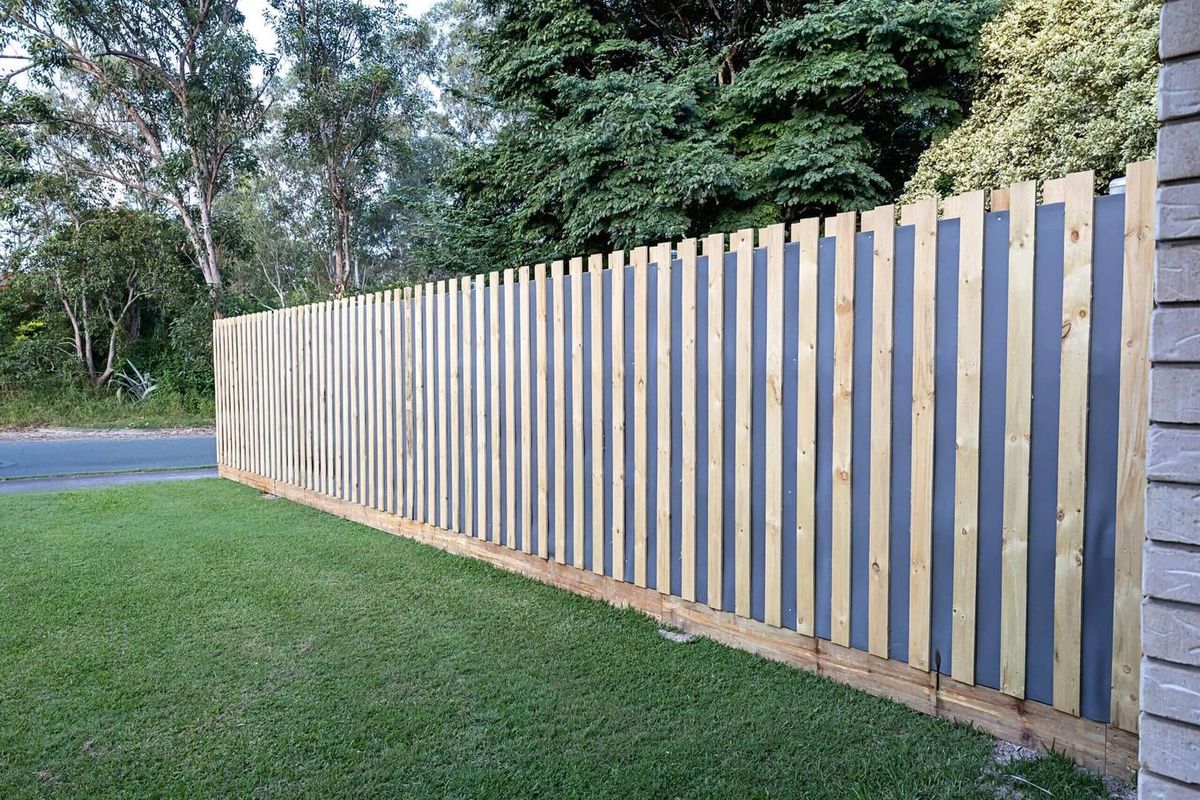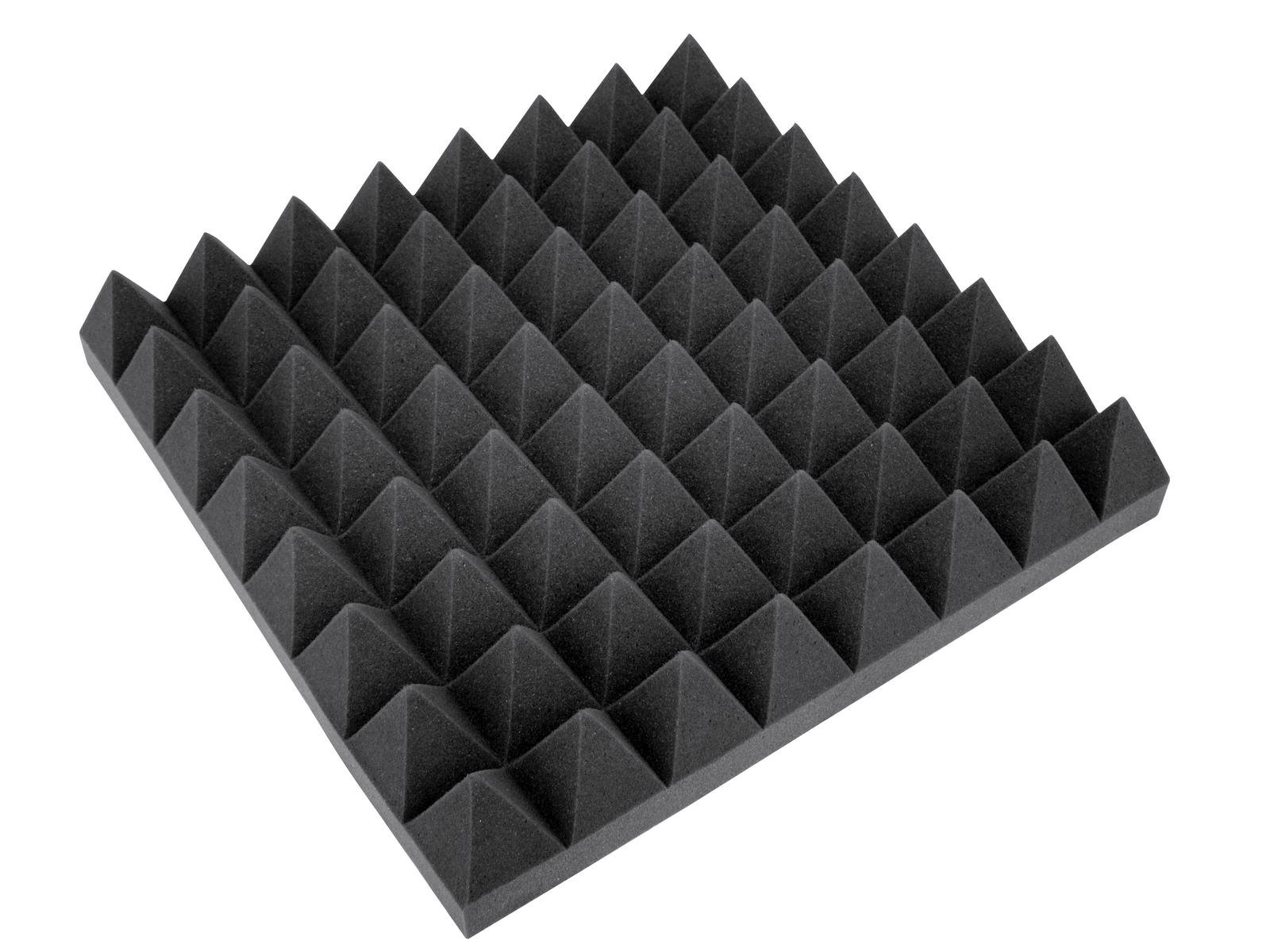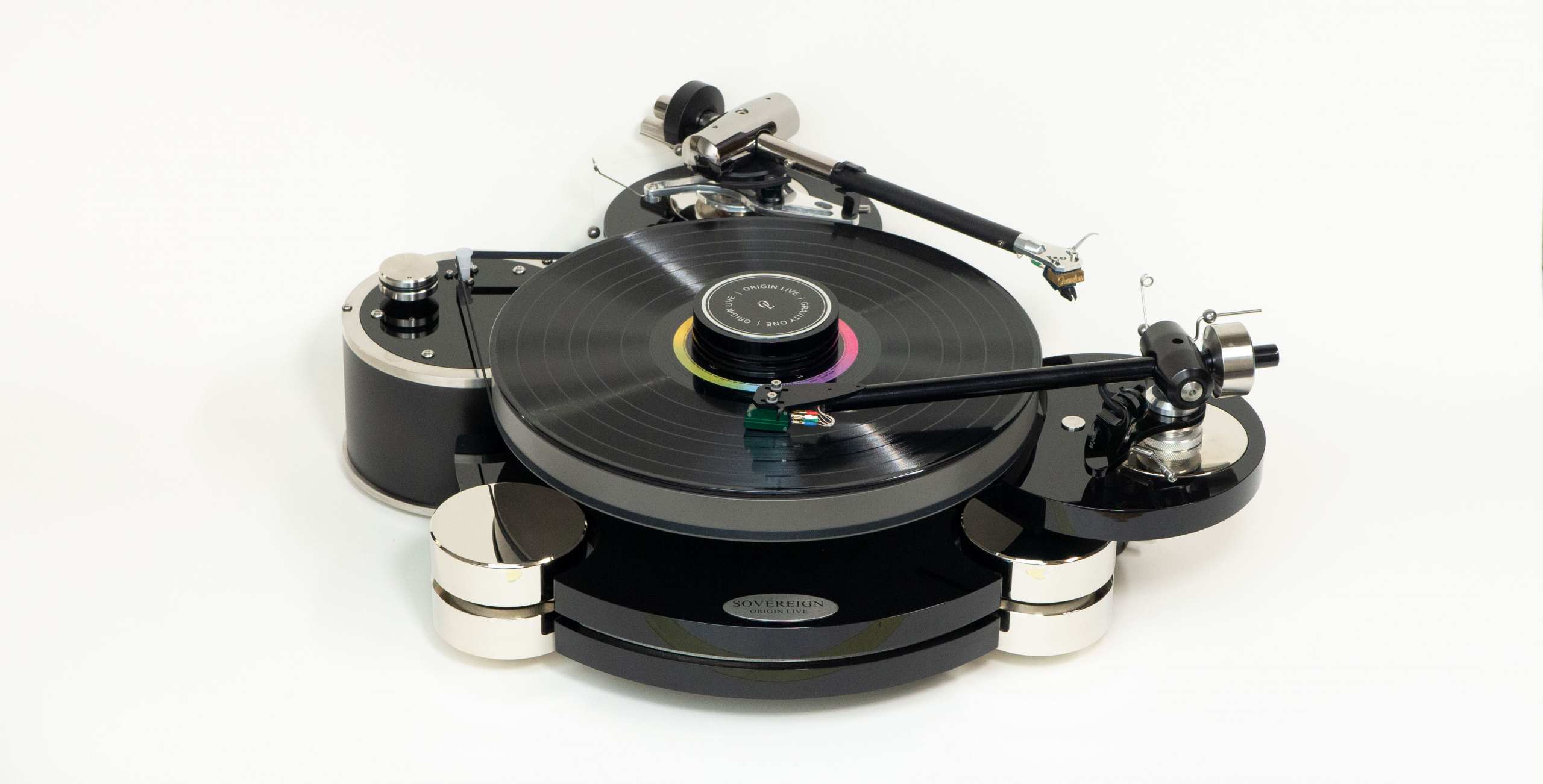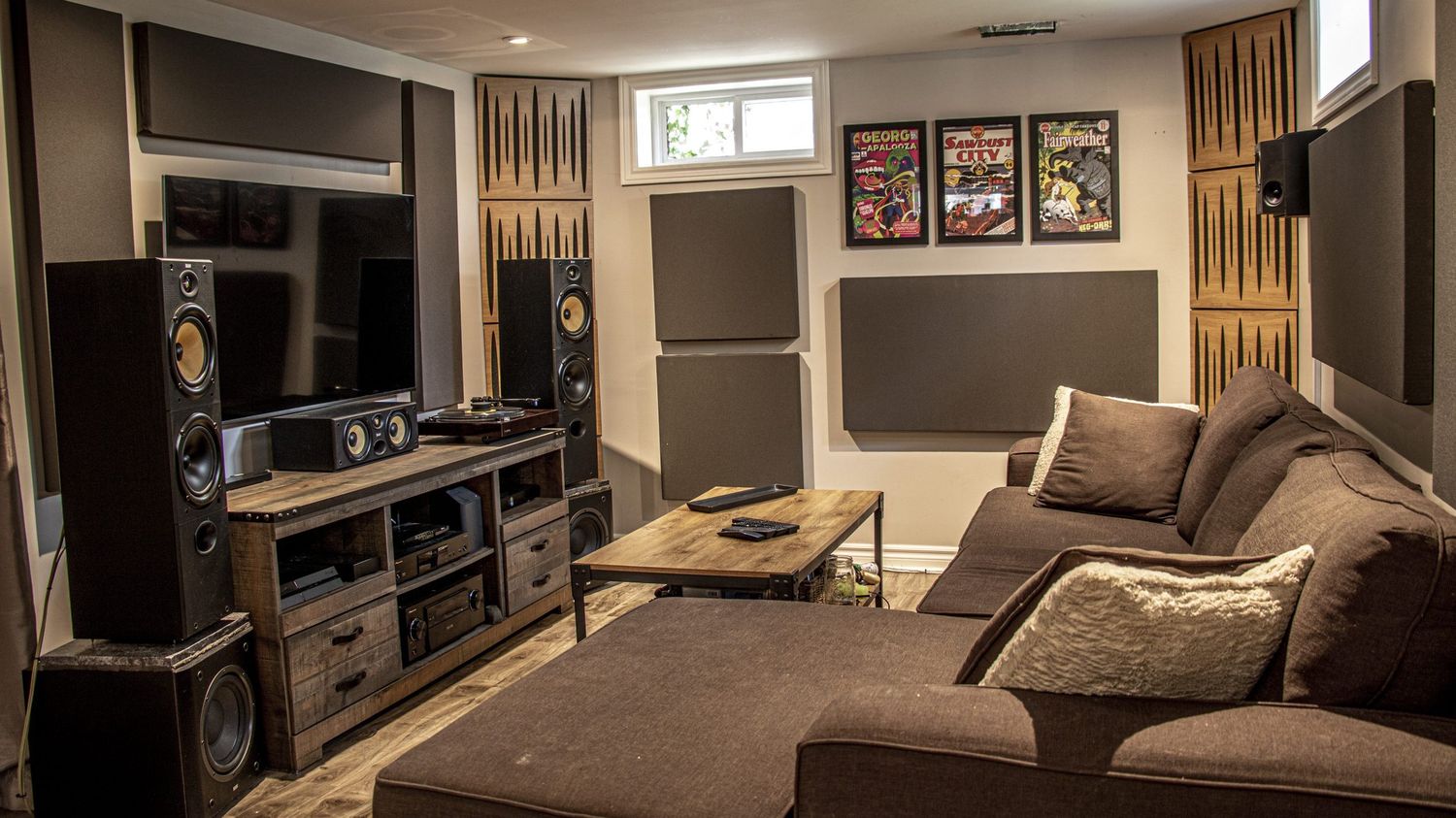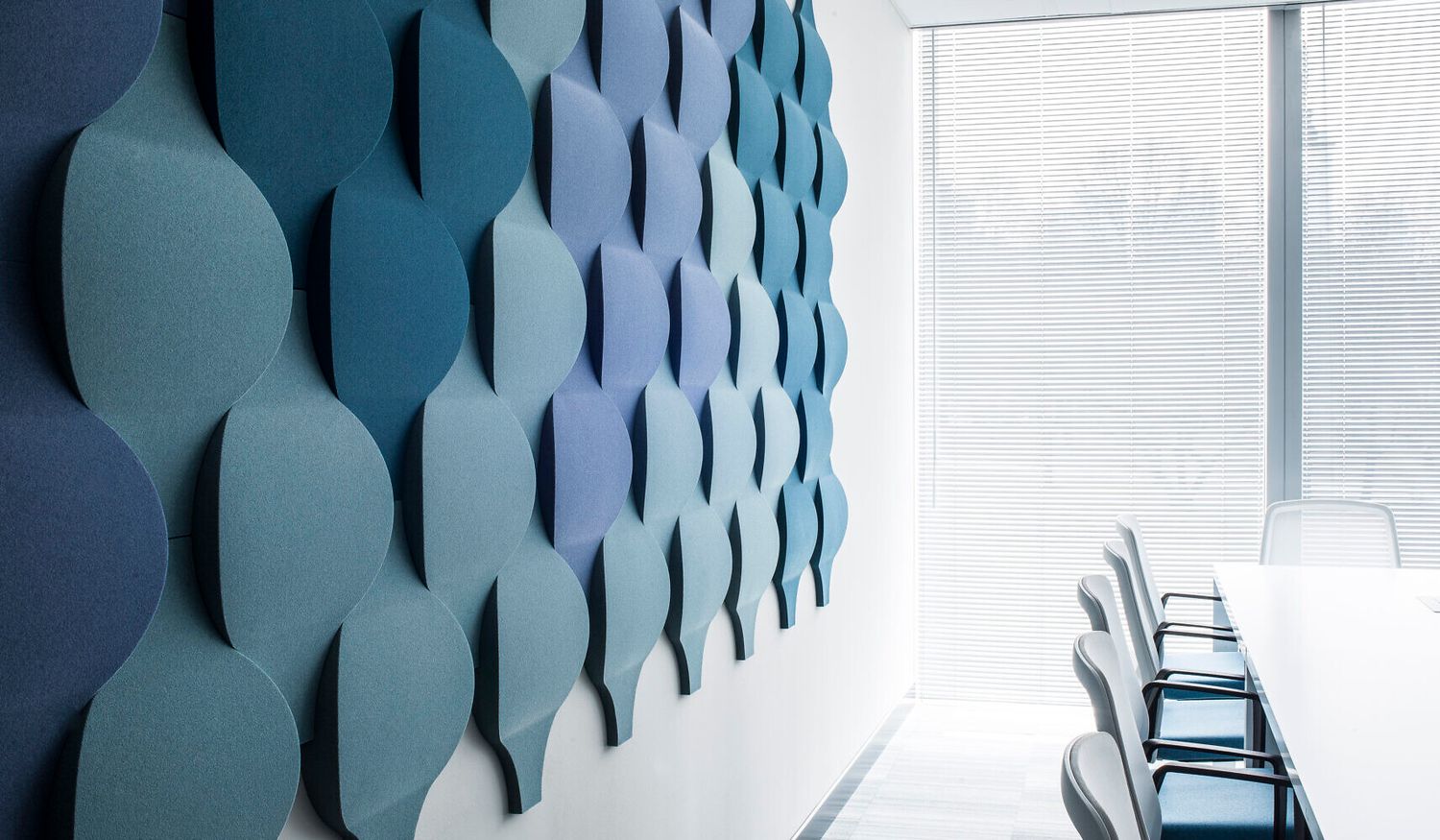Home>Production & Technology>Soundproofing>Which Soundproofing Shape Works The Best


Soundproofing
Which Soundproofing Shape Works The Best
Published: January 26, 2024
Looking for the best soundproofing shape? Discover the top solutions for blocking unwanted noise and creating a peaceful environment.
(Many of the links in this article redirect to a specific reviewed product. Your purchase of these products through affiliate links helps to generate commission for AudioLover.com, at no extra cost. Learn more)
Table of Contents
Introduction
Soundproofing is a crucial aspect of creating a peaceful and comfortable environment. Whether you live in a busy urban area or work in a noisy office, soundproofing allows you to minimize unwanted noise and distractions, helping you maintain focus and tranquility.
When it comes to soundproofing, there are various techniques and materials available. And one of the key considerations is choosing the right soundproofing shape. Different shapes have different properties and applications, making it important to understand their strengths and weaknesses.
In this article, we will explore the different soundproofing shapes and discuss their effectiveness in reducing noise. We will examine the concepts of absorption and reflection and how they impact soundproofing efficiency. By understanding these principles, you will be able to make an informed decision when selecting the best shape for your soundproofing needs.
So let’s dive in and discover which soundproofing shape works best for you.
Absorption vs. Reflection
Before delving into the different soundproofing shapes, it’s important to understand the two fundamental principles at work: absorption and reflection. These principles determine how sound waves interact with various surfaces and materials.
Absorption is the process by which sound energy is absorbed and converted into heat. When sound waves encounter an absorptive material, such as foam or fabric, the material converts the sound energy into a minuscule amount of heat, effectively reducing the sound wave’s amplitude. This leads to a decrease in the overall sound level.
Reflection, on the other hand, occurs when sound waves bounce off a surface without being absorbed. Reflective surfaces, like hard walls or glass windows, cause sound waves to bounce back into the environment, maintaining their original energy and intensity. This can lead to echoes and an increase in overall noise levels.
Both absorption and reflection play crucial roles in soundproofing. Depending on the specific needs and goals of a soundproofing project, the balance between these two principles may vary. For instance, in a recording studio, a high level of sound absorption is desirable to minimize echoes and reverberations. On the other hand, in a home theater, a combination of absorption and reflection is often used to create an immersive audio experience.
Keep in mind that no material or shape can completely eliminate all noise. However, by carefully selecting the appropriate soundproofing shape and utilizing the principles of absorption and reflection, you can significantly reduce unwanted noise and create a more peaceful environment.
Factors Affecting Soundproofing Efficiency
When considering soundproofing, it is important to understand the factors that can affect its effectiveness. Let’s take a closer look at some key factors that influence the efficiency of soundproofing measures:
- Material Density: The density of a soundproofing material is a critical factor to consider. Generally, denser materials such as solid wood or concrete have better soundproofing capabilities compared to lighter materials like foam or fabric.
- Thickness: The thicker the material, the better the soundproofing. Thicker materials offer increased mass, allowing them to absorb and block sound more effectively.
- Air Gaps: Air gaps act as barriers to sound transmission. Including an air gap between different layers of soundproofing materials can enhance their effectiveness by preventing sound waves from easily passing through.
- Sealing: Properly sealing any gaps or openings in a room is essential for effective soundproofing. Even the smallest gaps can allow sound to leak through, reducing the overall effectiveness of the soundproofing measures.
- Frequency Range: Different soundproofing materials and shapes may be more effective at blocking certain frequencies. Low-frequency sounds, such as bass, tend to require thicker and denser materials to effectively dampen them.
- Room Layout: The layout and design of a room can impact sound transmission. Irregularly shaped rooms or rooms with multiple nooks and corners may introduce sound reflections and make soundproofing more challenging.
It is important to consider these factors when selecting soundproofing shapes and materials. By addressing these variables, you can optimize the soundproofing capabilities of your space and achieve the desired level of noise reduction.
Common Soundproofing Shapes
There are several common soundproofing shapes that have been proven to be effective in reducing noise and creating a more serene environment. Let’s explore some of these shapes:
- Acoustic Panels: Acoustic panels, also known as sound absorbers, are one of the most popular and versatile soundproofing shapes. These panels are made from materials designed to absorb sound energy, such as foam or fiberglass. They are often used in recording studios, home theaters, and offices to reduce echoes and reflections.
- Bass Traps: Bass traps specifically target low-frequency sounds, which can be more challenging to control. These traps are designed to absorb and dissipate the energy of bass frequencies, preventing them from building up and causing unwanted vibrations in a room. Bass traps are commonly used in music studios and home theaters.
- Diffusers: Unlike absorptive materials, diffusers scatter sound waves, preventing them from bouncing directly back into the environment. Diffusers help in reducing echoes and improving sound quality by breaking up sound reflections and maintaining a more balanced acoustic environment. They are often used in recording studios, concert halls, and listening rooms.
- Soundproof Curtains: Soundproof curtains are a convenient and versatile option for reducing noise. These curtains are made from dense materials that provide a barrier against sound transmission. They are easy to install and can be used in various settings, such as bedrooms, home offices, or even as room dividers.
- Soundproofing Foam: Soundproofing foam, also known as acoustic foam or soundproofing tiles, is designed to absorb and dampen sound waves. These foam panels are commonly used in recording studios, podcasting rooms, and home theaters to improve sound quality by reducing reflections and echoes.
Each of these soundproofing shapes has its own unique properties and applications. The choice of shape will depend on factors such as the type of noise you are trying to control, the frequency range of the sound, and the specific requirements of your space. It is important to assess your soundproofing needs and consult with professionals to determine which shape will work best for you.
Acoustic Panels
Acoustic panels, also referred to as sound absorbers, are one of the most widely used and effective soundproofing shapes. These panels are specifically designed to absorb sound energy and minimize sound reflections, resulting in a quieter and more acoustically controlled environment.
Acoustic panels are typically made from materials with high sound absorption properties, such as foam or fiberglass. The porous structure of these materials allows them to trap and convert sound energy into heat, reducing the intensity and reverberation of sound waves within a space.
These panels are commonly used in various settings, including recording studios, home theaters, conference rooms, and offices. They can be mounted on walls or ceilings, strategically placed to target areas where sound reflections are prevalent.
One of the key advantages of acoustic panels is their versatility. They can be customized in terms of size, shape, and design to suit the aesthetic and functional requirements of a particular space. Acoustic panels are available in different colors and finishes, allowing them to seamlessly blend with the interior decor.
When installing acoustic panels, it is essential to consider the placement and coverage. The effectiveness of the panels depends on their placement in relation to the sound source and the listener. Strategic placement can help mitigate echoes, reduce background noise, and improve speech intelligibility.
Additionally, acoustic panels can be used in combination with other soundproofing measures to enhance their effectiveness. For example, combining acoustic panels with soundproof curtains or bass traps can yield even better results in reducing noise transmission and improving acoustic quality.
Overall, acoustic panels offer an excellent solution for controlling sound reflections and minimizing unwanted noise. They provide a versatile and customizable approach to soundproofing, making them an ideal choice for various applications where noise reduction and improved acoustics are desired.
Bass Traps
When it comes to controlling low-frequency sounds, such as bass, bass traps are a valuable addition to any soundproofing setup. Low-frequency sounds have longer wavelengths and can be more challenging to manage compared to higher-frequency sounds.
Bass traps are specially designed soundproofing shapes that target and absorb low-frequency sound waves. These traps are typically placed in corners where bass frequencies tend to accumulate and create an uneven and boomy acoustic environment.
The primary function of bass traps is to dampen and dissipate the energy of low-frequency sound waves. They absorb the bass frequencies, preventing them from bouncing back into the room and causing resonances. By reducing these resonances, bass traps help to create a more balanced and controlled sound environment.
Bass traps are commonly used in settings where accurate audio reproduction is vital, such as recording studios, home theaters, and music practice rooms. They can also be beneficial in rooms with loudspeakers or subwoofers, as they minimize the potential for bass buildup and muddiness in the sound output.
There are different types of bass traps available, including panel bass traps and corner bass traps. Panel bass traps are flat panels filled with sound-absorbing materials, while corner bass traps are triangular-shaped and designed to fit into corners, where bass energy tends to accumulate.
When using bass traps, it is essential to strategically place them in the room to achieve the desired results. Proper positioning of bass traps near corners or wall-to-wall junctions can effectively reduce bass resonances and improve sound quality.
It’s worth noting that bass traps should be used in conjunction with other soundproofing measures, such as acoustic panels or diffusers, for comprehensive sound control. Combining different soundproofing shapes can optimize the acoustic performance of a space, providing a better listening experience and minimizing unwanted bass reflections.
In summary, bass traps are an essential soundproofing shape for managing low-frequency sounds. By effectively absorbing and dissipating bass energy, they help create a more balanced and controlled sound environment, making them a valuable addition to any soundproofing setup.
Diffusers
Diffusers are an important soundproofing shape used to control sound reflections and improve the acoustics of a space. Unlike absorptive materials, which absorb sound energy, diffusers scatter sound waves to create a more balanced and natural sound environment.
Sound waves can bounce off flat surfaces, such as walls, causing reflections and potentially creating acoustic issues like echoes and standing waves. Diffusers are designed to break up these sound reflections by scattering the sound waves in different directions, diffusing the energy and preventing concentrated areas of sound reflection.
Diffusers typically consist of irregularly shaped surfaces or panels with varying depths and angles. The unique shape and arrangement of these surfaces help disperse sound waves evenly throughout the space, reducing the intensity of reflections and minimizing acoustic problems.
These soundproofing shapes are commonly used in environments where sound quality and clarity are crucial, such as recording studios, concert halls, listening rooms, and home theaters. By reducing echoes and minimizing focused sound reflections, diffusers help create a more immersive and pleasant listening experience.
Diffusers can be applied to walls, ceilings, or other surfaces in a room. They are often strategically placed at reflection points, where sound waves bounce back most strongly. By diffusing the sound waves at these points, diffusers help to achieve a more balanced sound environment with improved clarity and spaciousness.
It’s important to note that diffusers should be used in conjunction with other soundproofing measures, such as absorptive materials like acoustic panels. Combining diffusers with absorption can create a well-balanced acoustic treatment that effectively controls both reflections and reverberations.
Overall, diffusers are an essential soundproofing shape for controlling sound reflections and improving the acoustics of a space. By scattering sound energy and reducing concentrated reflections, diffusers create a more natural and balanced sound environment, enhancing the overall listening experience.
Soundproof Curtains
Soundproof curtains, also known as acoustic curtains or sound-blocking curtains, offer a practical and versatile soundproofing solution for reducing noise transmission in various settings. These curtains are made from dense and sound-absorbing materials that effectively block and absorb sound waves, providing a barrier against external noise.
Soundproof curtains are especially useful in spaces where traditional soundproofing methods, such as wall or ceiling treatments, may not be feasible or desired. They are easy to install and can be hung like regular curtains, making them a convenient option for bedrooms, living rooms, home offices, or any area where noise reduction is desired.
One of the key features of soundproof curtains is their ability to dampen both high and low-frequency sounds. The dense materials used in their construction help to absorb and dissipate sound energy, reducing the overall noise level in the room. This can be particularly useful in urban areas with high levels of external noise, such as traffic or construction sounds.
Soundproof curtains also offer additional benefits beyond noise reduction. They can help with thermal insulation, blocking out drafts and reducing energy loss through windows. Additionally, they can provide privacy by blocking both sound and light, creating a more comfortable and secluded space.
It’s important to note that while soundproof curtains can significantly reduce noise, they may not provide the same level of soundproofing as more permanent solutions like acoustic panels or insulation. The effectiveness of soundproof curtains depends on factors such as the thickness and density of the curtain material, as well as the level of noise you are trying to block.
When selecting soundproof curtains, look for curtains labeled as “soundproof” or “acoustic.” Consider the thickness and weight of the curtains, as heavier materials tend to provide better sound-blocking properties. Additionally, opt for curtains that extend beyond the width and length of the window to ensure optimal coverage and reduce sound leakage.
Soundproof curtains offer a practical and cost-effective solution for reducing noise and enhancing privacy in various settings. Whether you’re looking to create a quiet sleeping environment or a more peaceful workspace, soundproof curtains can significantly improve the acoustic quality of your space.
Soundproofing Foam
Soundproofing foam, often referred to as acoustic foam or sound-absorbing foam tiles, is a popular choice for soundproofing applications. This type of foam is specifically designed to absorb sound energy and minimize sound reflections, making it an effective solution for reducing noise and improving the acoustics of a room.
Soundproofing foam is made from open-cell polyurethane foam or melamine foam, both of which have excellent sound-absorbing properties. The porous structure of the foam allows it to trap and convert sound energy into heat, reducing the intensity and echo of sound waves within a space.
One of the main advantages of soundproofing foam is its versatility and ease of installation. The foam tiles can be easily adhered to walls, ceilings, or other surfaces using adhesive or adhesive strips. They can also be easily cut into various shapes and sizes to fit specific areas or to achieve creative designs.
Soundproofing foam is commonly used in recording studios, podcasting rooms, home theaters, and any space where audio clarity and minimal sound reflections are important. It helps to improve the quality of sound recordings and reduce echoes and reverberations, resulting in a more balanced and professional sound environment.
It’s worth noting that soundproofing foam is most effective in absorbing mid to high-frequency sounds. For low-frequency sounds, such as bass, additional soundproofing measures like bass traps may be necessary to achieve optimal results.
When selecting soundproofing foam, it’s important to consider the thickness and density of the foam. Thicker and denser foam will provide better sound absorption. Additionally, look for foam with a fire-resistant rating to ensure safety and compliance with building codes.
While soundproofing foam can be highly effective in reducing noise and improving acoustics, it’s important to understand its limitations. It is not a complete sound-blocking solution and may not be sufficient for blocking external noise or sound leakage between rooms. For comprehensive soundproofing, combining soundproofing foam with other measures like acoustic panels or soundproof curtains is recommended.
In summary, soundproofing foam is a versatile and effective soundproofing shape for absorbing sound energy and minimizing sound reflections. It is easy to install, customizable, and widely used in various settings to create a more acoustically controlled and pleasant sound environment.
Comparison of Soundproofing Shapes
When it comes to soundproofing, choosing the right shape for your specific needs is crucial. Each soundproofing shape offers unique properties and advantages. Let’s compare the different soundproofing shapes we’ve discussed to help you make an informed decision.
Acoustic Panels: Acoustic panels excel at absorbing sound energy and reducing echoes and reflections. They are versatile, customizable, and widely used in various settings. They are especially effective for mid to high-frequency sounds and can be used in combination with other shapes for a comprehensive sound control system.
Bass Traps: Bass traps are specifically designed to target and absorb low-frequency sounds, which can be more challenging to control. They help prevent bass buildup and resonances, creating a more balanced sound environment. Bass traps are ideal for settings where accurate audio reproduction is important, such as recording studios and home theaters.
Diffusers: Diffusers scatter sound waves and break up reflections, creating a more natural and even sound distribution. They are effective at reducing echoes and maintaining sound clarity. Diffusers are commonly used in settings where sound quality and acoustic balance are crucial, such as recording studios and concert halls.
Soundproof Curtains: Soundproof curtains offer a practical and versatile solution for noise reduction. They are easy to install, provide insulation and privacy, and can block both high and low-frequency sounds. However, their soundproofing capabilities may not be as robust as other shapes.
Soundproofing Foam: Soundproofing foam is highly effective at absorbing sound energy, particularly in mid to high-frequency ranges. It is easy to install, customizable, and commonly used in recording studios and home theaters. However, it may not provide complete soundproofing and may require additional measures for low-frequency sound control.
When choosing a soundproofing shape, consider the specific requirements of your space, the type of noise you are trying to control, and the frequency range of the sound. In some cases, a combination of different shapes may be necessary to achieve the desired level of soundproofing.
It’s essential to understand that no soundproofing shape can completely eliminate all noise. The effectiveness of soundproofing measures also depends on factors such as material density, thickness, and proper installation techniques. Consulting with professionals in the field will provide guidance tailored to your specific needs, ensuring the most effective and efficient soundproofing solution.
Conclusion
Soundproofing is a vital consideration for creating a peaceful and comfortable environment, and choosing the right soundproofing shape is key to achieving optimal results. Through this article, we have explored different soundproofing shapes and their effectiveness in reducing noise.
We learned about absorption and reflection, the fundamental principles that impact soundproofing efficiency. We discovered that absorption involves converting sound energy into heat with materials like acoustic panels and soundproofing foam. Reflection, on the other hand, involves bouncing sound waves off surfaces, which can be controlled with diffusers.
We discussed common soundproofing shapes, including acoustic panels, which excel at absorbing sound energy and reducing echoes. Bass traps target and absorb low-frequency sounds, while diffusers scatter sound waves to create a balanced sound environment. Soundproof curtains offer a versatile and practical noise reduction solution, and soundproofing foam absorbs sound energy, although supplementation may be necessary for low-frequency sounds.
Finally, we compared the different soundproofing shapes, emphasizing the importance of understanding the specific requirements of your space, the type of noise you want to control, and the frequency range of the sound. It’s crucial to consider factors like material density, thickness, and proper installation techniques when selecting a shape.
While no soundproofing shape can completely eliminate all noise, a combination of shapes and proper consideration of factors can significantly reduce unwanted noise and create a more peaceful environment.
To make the most informed decision for your soundproofing needs, consulting with professionals in the field is recommended. They can provide expert guidance and help tailor a soundproofing solution specific to your space and requirements.
Remember, soundproofing is an ongoing process, and continual evaluation and improvement can lead to a more tranquil and enjoyable living or working environment.

